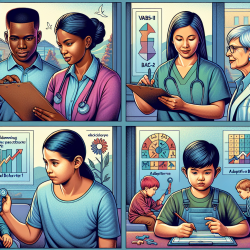Introduction
As a Special Education Director, ensuring the safety and well-being of students during disasters is paramount. The research article "Types of Disasters" by Goodhue et al. provides valuable insights into the unique vulnerabilities of children during such events. This blog aims to help practitioners improve their skills by implementing the outcomes of this research or encouraging further exploration.
Understanding Pediatric Vulnerabilities
The research highlights that children are significantly impacted by both natural and man-made disasters due to their unique anatomical, physiological, behavioral, developmental, and psychological vulnerabilities. These differences must be considered when planning and preparing for disasters. Practitioners should focus on:
- Recognizing the higher risk of hypothermia in children due to a larger body surface area-to-mass ratio.
- Understanding the respiratory differences that make children more susceptible to inhaled toxins.
- Being aware of the psychological impact of disasters on children, who may reflect the emotional state of their caregivers.
Enhancing Disaster Preparedness
Disaster preparedness involves more than just having a plan in place. It requires a comprehensive understanding of potential hazards and the unique needs of the pediatric population. Practitioners should:
- Conduct a Hazard Vulnerability Assessment (HVA) to identify potential risks specific to children.
- Develop a pediatric-specific disaster plan that includes drills, exercises, and appropriate equipment and medications.
- Collaborate with community partners to ensure a coordinated response.
Addressing Therapist Staffing Shortages
In the context of disasters, therapist staffing shortages can be a significant challenge. Practitioners can address this by:
- Utilizing teletherapy services to reach students in need.
- Training existing staff to provide basic psychological support during emergencies.
- Creating a network of volunteer therapists who can be mobilized during disasters.
Legal Compliance and Parental Involvement
Ensuring legal compliance is crucial in disaster preparedness and response. Practitioners should be familiar with relevant laws and regulations and involve parents in the planning process. This includes:
- Informing parents about the disaster plan and their role in it.
- Ensuring that parental consent is obtained for any emergency interventions.
- Providing clear communication channels for parents during a disaster.
Conclusion
By implementing the outcomes of the research on disaster types, practitioners can enhance their skills and better prepare to support children during disasters. Encouraging further research and collaboration with community partners will ensure a comprehensive approach to disaster preparedness.
To read the original research paper, please follow this link: Types of Disasters.










